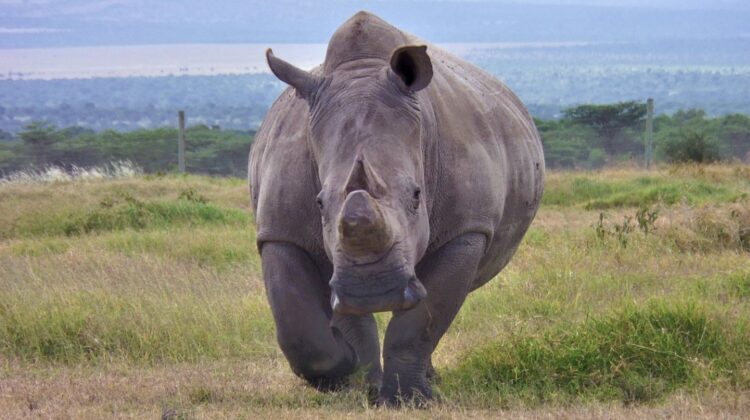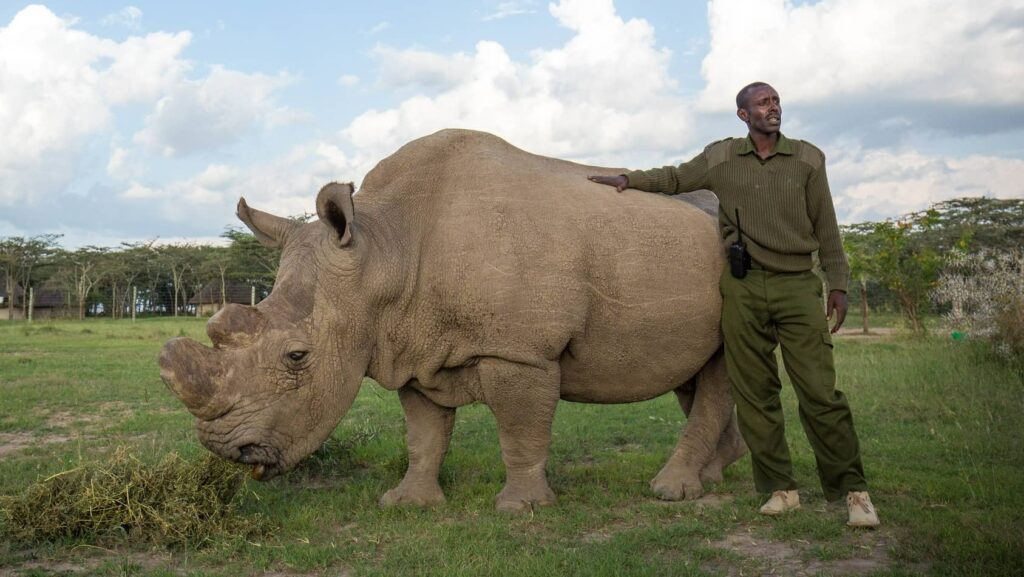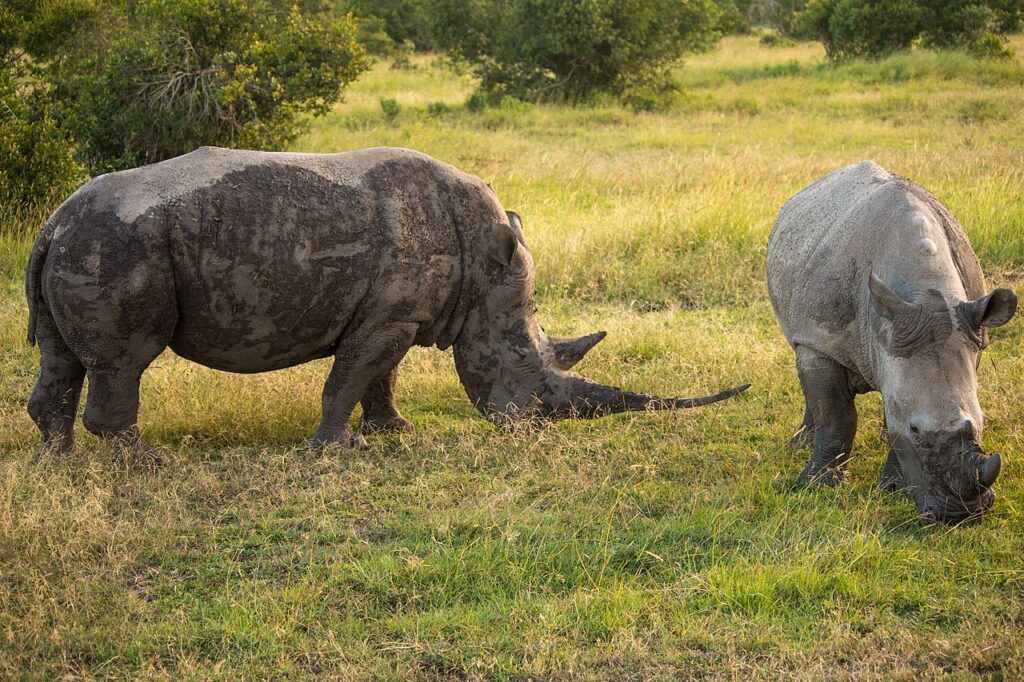
With only two northern white rhinos left on our planet, the survival of these magnificent animals hangs in the balance. But now, a groundbreaking in vitro fertilization project offers hope for their species.
Najin and Fatu, two elderly female northern white rhinos living in Kenya, are the last known individuals of their subspecies. With their advanced age and inability to reproduce naturally, their species, once found across central Africa but nearly wiped out by illegal poaching, stood on the precipice of extinction.

However, a glimmer of hope has emerged with the announcement of the world’s first successful in vitro fertilization (IVF) pregnancy in a rhino. This groundbreaking achievement might pave the way for the revival of one of the most critically endangered animals on Earth.
“To achieve the first successful embryo transfer in a rhino is a huge step,” said Susanne Holtz of Leibniz Institute for Zoo and Wildlife Research in Germany, which is part of the Biorescue project, an international consortium trying to save the northern white rhino.
“But now I think with this achievement, we are very confident that we will be able to create northern white rhinos in the same manner and that we will be able to save the species.”

BioRescue is an ambitious collaborative effort between scientists, conservationists, and zoos across the globe. The project’s goal is to utilize advanced reproductive technologies like IVF and stem cell techniques to create viable embryos from the remaining genetic material of deceased northern white rhinos. These embryos would then be implanted into surrogate mothers of a closely related subspecies, the Southern white rhino, offering a second chance for the Northern white rhino to exist.
The recent announcement marked a significant milestone in BioRescue’s journey. Scientists successfully transferred a lab-created embryo derived from Fatu’s genetic material into a Southern white rhino surrogate in Kenya. While the pregnancy is still in its early stages, every passing week brings the project closer to its ultimate goal: the birth of a healthy northern white rhino calf.
This feat is remarkable for several reasons. Firstly, it demonstrates the feasibility of using IVF techniques for rhino reproduction, paving the way for future applications in other endangered species facing similar challenges. Secondly, it rekindles hope for the northern white rhino’s survival, offering a potential solution to what seemed like an inevitable extinction.

However, the road to complete success is still long and challenging. The pregnancy needs to be closely monitored and nurtured, and even if a healthy calf is born, more breeding efforts will be required to establish a viable population. Additionally, ethical considerations surrounding such interventions within species need to be carefully addressed and discussed.
Despite the challenges, the world is watching BioRescue with bated breath. The success of this project could rewrite the narrative for countless endangered species struggling to survive in a changing world. Najin and Fatu might not be able to contribute directly, but their legacy might live on in future generations of northern white rhinos brought back from the brink of extinction.

Leave a Reply